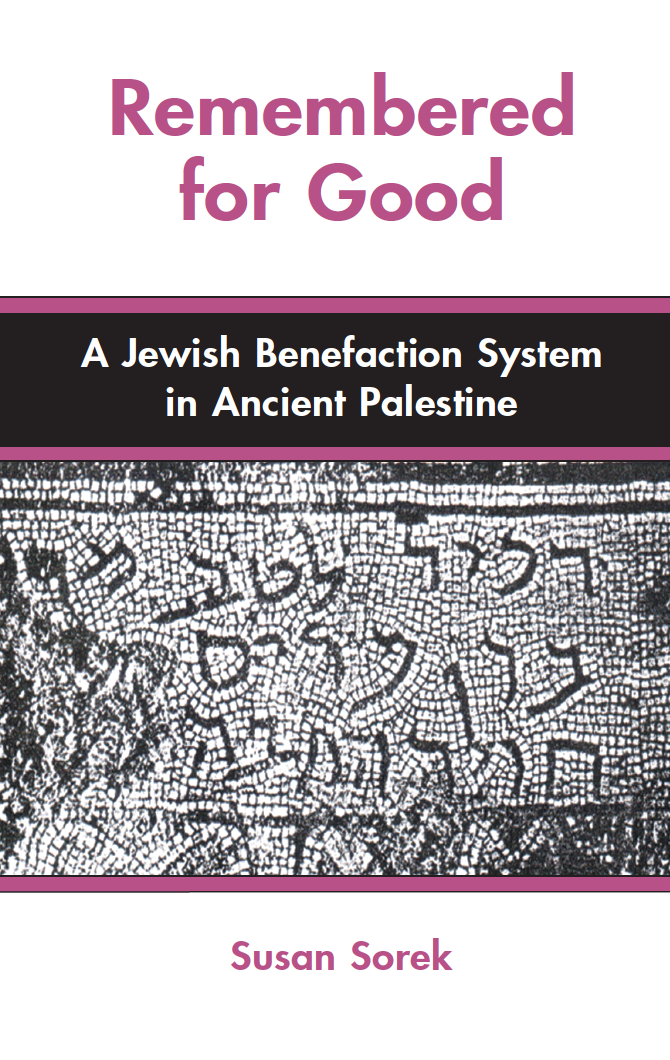Remembered for Good: A Jewish Benefaction System in Ancient Palestine
Original price was: £60.00.£27.50Current price is: £27.50.
This is the first monograph devoted to the system of community benefaction practised by Jews in Palestine from the second century BCE to the sixth century CE.
This is the first monograph devoted to the system of community benefaction practised by Jews in Palestine from the second century BCE to the sixth century CE. Principal is the evidence from synagogue inscriptions erected to patrons and donors from the second century CE onwards. All these inscriptions are reviewed, together with a re-examination of how they are to be translated.
Sorek is especially interested in the motivation for benefactions, and concludes that the Jewish system attested in the inscriptions is specific to the Jewish community. It was not merely a copy of the well-known Graeco-Roman system of euergetism, in which rich citizens contributed from their wealth to public expenses. But neither was the Jewish system properly an expression of charity, as has often been thought. Sorek argues that the benefaction system is best understood as an expression of hesed , the meaning of which she explores in detail.
Additional information
| table of contents | 1. GRAECO–ROMAN EUERGETISM Euergetism in the Hellenistic and Roman City Hellenistic Euergetism Voluntary Patronage Funerary Euergetism Christian Charity and Almsgiving Roman Euergetism in the Late Antique Period 2. BENEFACTORS AND BENEFACTIONS IN THE LATE SECOND TEMPLE PERIOD Epigraphic Evidence for the Second Temple Period Herod: A Jewish Benefactor? Famine Relief: The Jewish Response Brief Survey of Diaspora Epigraphic Material for First Century CE 3. POST-TEMPLE BENEFACTIONS: SYNAGOGUE INSCRIPTIONS FROM PALESTINE 4. ‘REMEMBERED FOR GOOD’: SYNAGOGUE DEDICATORY INSCRIPTIONS Dedications to the Living or Memorials to the Deceased? The Formula ‘Remembered for Good’ ‘Remembered for Good’ in Translation The Afterlife Eight Possible Memorial Inscriptions The Remaining Inscriptions 5. LIVING DONORS The Communal Dimension The Holy Congregation The Community in General Sponsorship 6. ‘REMEMBERED FOR GOOD’ AND ANONYMOUS DONORS Other Anonymous Donations No Formula 7. THE BLESSING FORMULA Other Occurrences of Blessings 8. WOMEN AS BENEFACTORS Women and Vows in the Diaspora Women in Palestinian Inscriptions 9. CONCLUDING REMARKS ON THE EMPIRICAL EVIDENCE 10. ‘NUGGETS OF IDEOLOGY’: THE MOTIVATIONAL FORCE BEHIND A JEWISH BENEFACTION SYSTEM 11. THE WORD HESED The word hesed Definition of hesed Elements associated with hesed Hesed and Emeth: The Common Bond 12. TYPES OF HESED Human hesed God’s hesed and raham Human raham 13. A BENEFACTION SYSTEM BASED ON HESED The ‘Poor’ and ‘Needy’ 14. HESED AND RAHAM IN THE LXX Hesed in the LXX Raham in the LXX Eleos and Dikaiosune 15. THE APPLICATION OF HESED Hesed and Jewish Benefactions Hesed and Peer Solidarity Other Categories of hesed Indirect hesed 16. CHARITY IN THE SECOND TEMPLE PERIOD Charity in the Graeco-Roman World Charity in Palestine Relative Use of the Words ‘Charity’ and ‘Poor’ Some Evidence against Organised Charity in the Second Temple Period 17. THE DEVELOPMENT OF TSEDAKAH Tsedakah: Its Organisation and Development Redemptive Almsgiving in Judaism and Christianity 18. WOMEN AND HESED Women in Palestinian Inscriptions Women and hesed Why the Rabbis Adopted the Matrilineal Principle |
|---|---|
| author | |
| authors | |
| editors | |
| isbn | |
| list price (paperback) | |
| page extent | |
| publication | |
| publication date | |
| series | |
| table of contenta | |
| version |


David Briones, Religious Studies Review. –
Was the system of Jewish benefaction within Palestine distinct from the Greco-Roman system, and if so, was the underlying motivation of Jewish benefactions distinct as well? … [Sorek’s] tripartite sketch of God as benefactor, the Jewish person as a channel of benefaction, and the Jew or non-Jew as the recipient is indeed illuminating and opens some paths for further research. For example, it would be interesting to compare this pattern of exchange with Paul’s conception of gift, identifying the points of convergence and divergence, and then accounting for any differences created by the Christ-event.